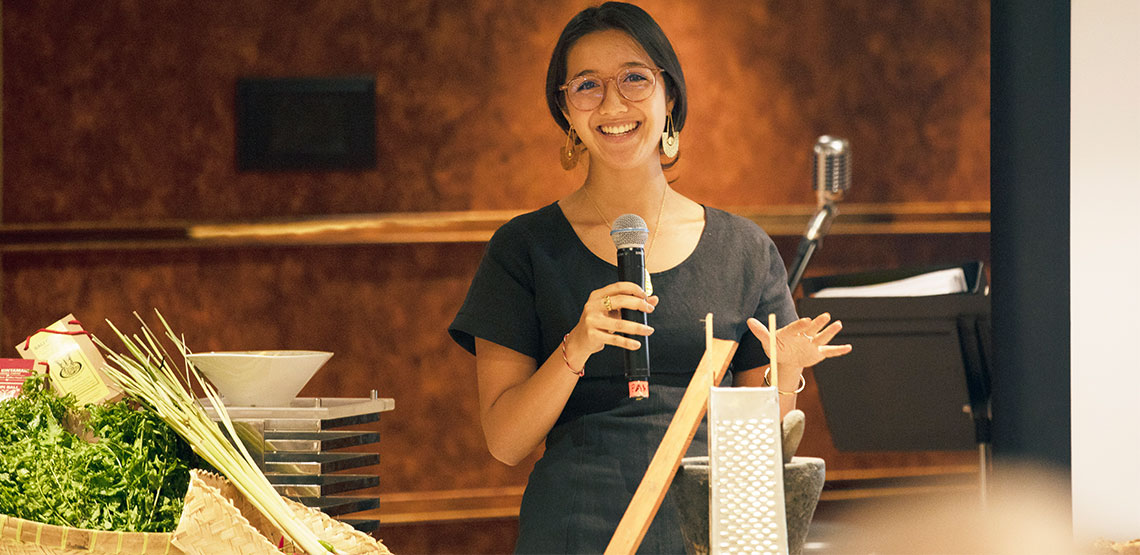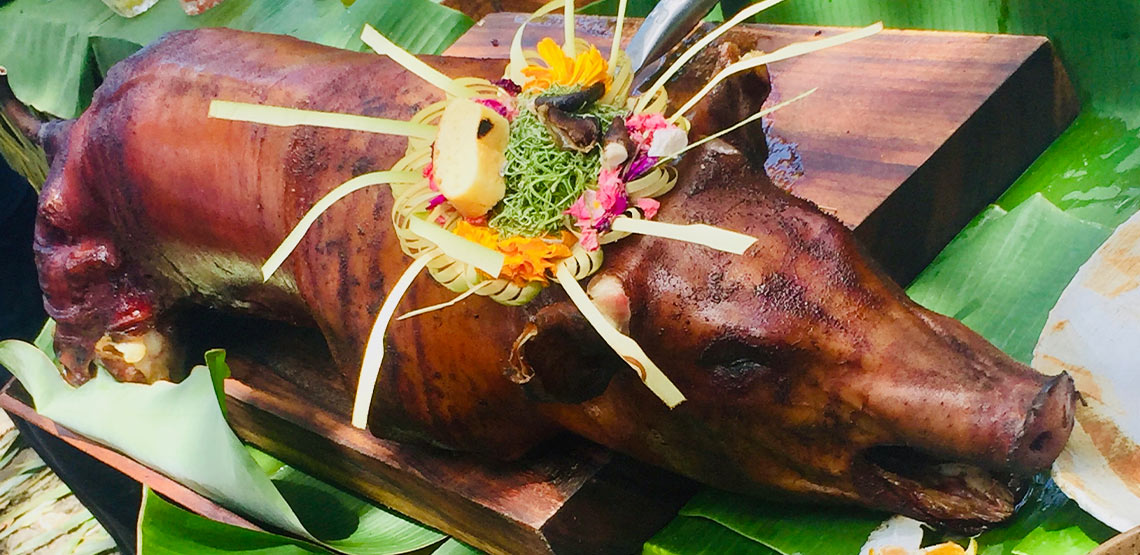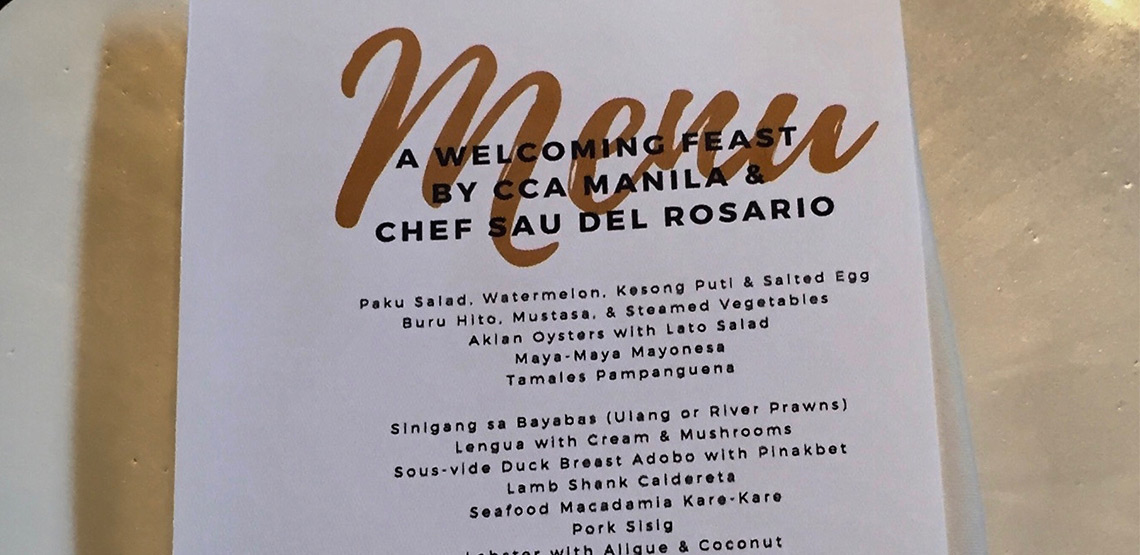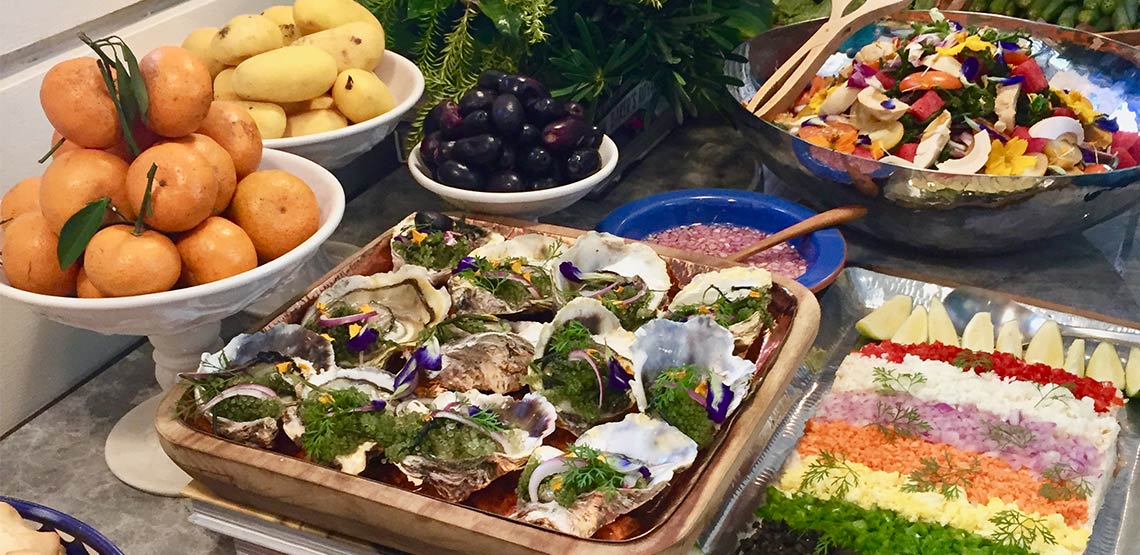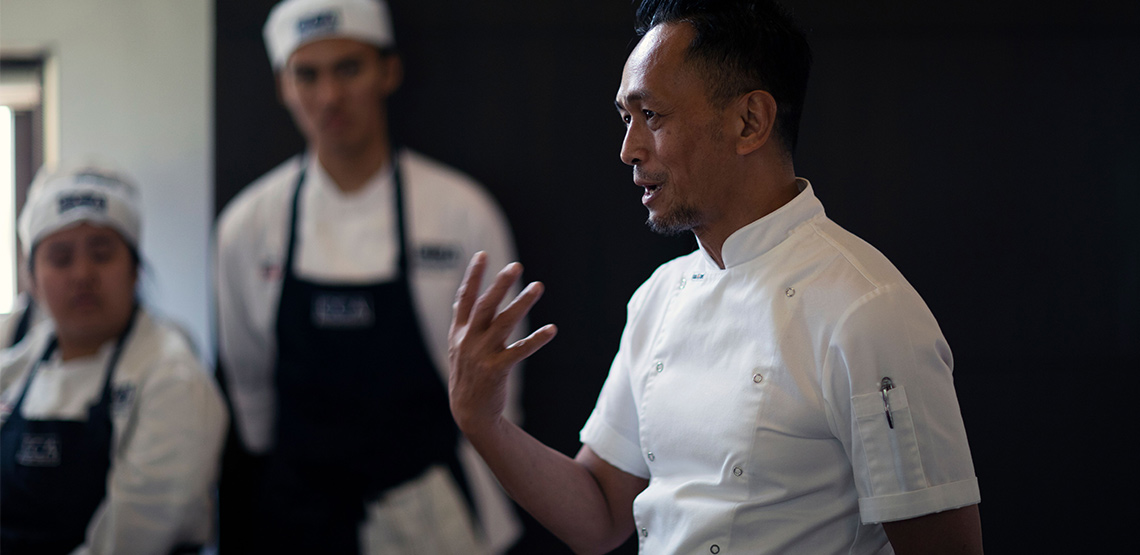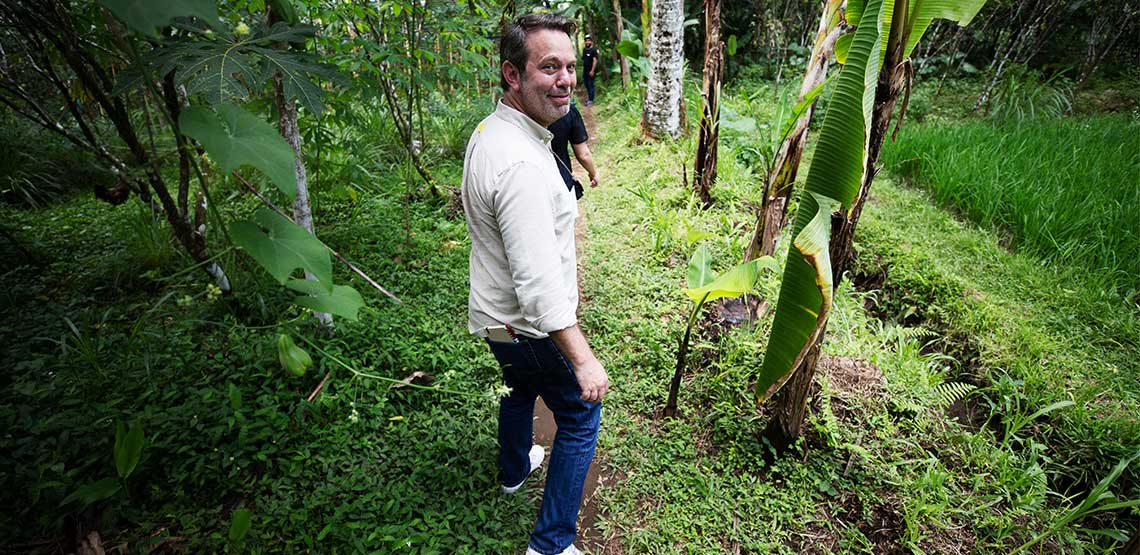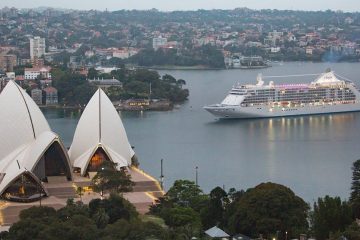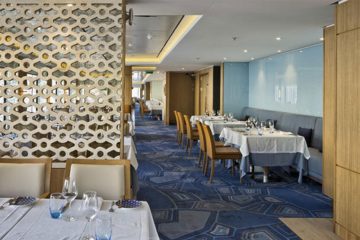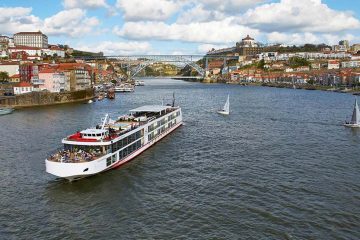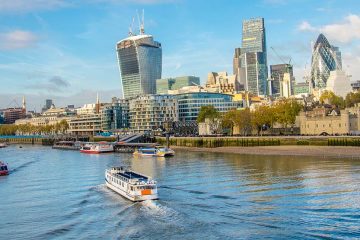Silversea's S.A.L.T. Program Takes Culinary Cruising to the Next Level
Take Your Taste Buds on a Journey
Imagine sailing through Greece and coming home able to present family and friends with an authentic evening of Greek food not even your local Greek restaurant could match. Or a culinary experience from Japan. Or Spain. Or Russia. Or wherever the wind has taken you in utmost comfort on a beautiful white ship as it travels the world.
And if you don’t fancy cooking? You will return home having experienced exciting meals so far off the beaten path, you’ll need Instagram-worthy pictures just to prove you didn’t dream them. That’s what’s in store when Silversea launches its extraordinary culinary adventure program called “S.A.L.T.”, an acronym for Sea and Land Taste.
The brainchild of Adam Sachs, 3-time winner of the James Beard Journalism Award and former editor of Saveur Magazine, S.A.L.T. will be launched next year in its entirety.
When Silversea’s new Silver Moon, sister to her flagship Silver Muse, sets sail in August 2020, she will feature eight restaurants — each with its own cuisine ranging from haute Français at La Dame, to meticulously prepared and presented Japanese cuisine at Kaiseki, to thin-crust pizza at the open-air Spaccanapoli.
But the piece de resistance for the culinary traveler will undoubtedly be the S.A.L.T. Lab — an enormous hands-on kitchen, wine tasting and cocktail mixing “learning center” that Mr. Sachs is collaborating with Silversea on. Here, experts well-versed in the cuisine of the countries the ship visits will conduct classes and give lectures, all of which are accompanied by tastings and conversations.
It will be an extraordinary deep-dive into the food culture of every port the ship visits. But it may be the onshore excursions where Mr. Sachs encyclopedic food connections will bring Silversea passengers closer to unmatched culinary experiences.
In March, I was able to take part in a special pilot of the S.A.L.T. program for journalists, food and cruise writers alike, on board a Silver Muse. Our journey started in Bali, Indonesia, moved on to Borneo in Malaysia, then to a remote Philippine island, and finished spectacularly in Manila.
Here’s what I discovered the Silversea culinary cruise has in store for travelers.
Balinese Cuisine
Restaurant: Kaum
Our culinary adventures began the moment we set foot on the ship. Off we went to Kaum, a critically acclaimed Indonesian restaurant in a surreal modern setting beside the ocean. Our first Balinese feast awaited us. Chef Wayan Kresna Yasa combined traditional foods with his own innovations in a spectacular meal.
As the group gathered for its first meal together, the camaraderie began; there’s a natural connection between people who share the same passions. S.A.L.T. means great food in the company of great people who grow it, cook it and share it.
Restaurant: Locavore
An overnight stay in Bali, one of many ports where Silversea lingers an extra day, allowed passengers their second taste of S.A.L.T. A caravan of mini-buses climbed up into the hills to Ubud, the spiritual heart of Bali and home to a culinary mecca. Locavore has been named one of the 50 best restaurants in the world.
Restaurant: Nusantara
We stopped for breakfast next door at their second restaurant, Nusantara. Here we met Dutch-born Eelke Plasmeijer and his partner and fellow chef Ray Andriansaya. The pair’s Ubud food empire now includes a local butcher, called Local Parts. (Eelke said many locals first thought Local Parts was a repair shop for Bali’s inestimable number of motor bikes.)
Above the store, LocoLAB’s Chef Felix Shroeder and Fido Nuswatama Rahadian preside over a test kitchen and cooking school. The school is dedicated to teaching young Indonesian cooks the wealth of materials available to them in an effort to keep traditions not only alive but continually evolving.
Payangam Farm Visit
After a breakfast, surprising in its complexity, we boarded our vans and driving past rice fields and temples, went deep into the countryside to a farm in Payangan. Here, Locavore grows its vegetables and raises some of the animals which will later appear on its restaurants’ tables.
We hiked the property, coming to a clearing where we watched palm sugar being created from the nectar of coconut palms. The harvester climbed the trunk of a palm tree where spikes had released the juice. Collecting it, he returned to earth where he kettle-boiled the nectar which slowly thickened into a golden sugar, redolent with smoke and caramel.
From there, we walked through fruit trees and rice fields, sampling mangosteens and tangerines as we navigated narrow paths at the edge of the rice paddies. Turning a corner, we arrived at a complete surprise: A picnic where Locavore had laid a feast that included a complete “lechon” (a roasted suckling pig), and literally dozens of things to eat and drink. Our picnic complete, we returned to the comfort of Silver Muse.
Chef: Maya Kerthyasa
Equally remarkable were the experts who joined us for our days at sea.
Maya Kerthyasa has the distinction of being of Balinese royal blood. A princess of Ubud, one of 11 Balinese kingdoms, Maya is devoting herself to gathering and transcribing her 95-year-old grandmother’s treasury of Balinese recipes.
She joined us aboard the ship where her wealth of culinary talent was matched only by her passion for Balinese culture. To understand Balinese food is a path to understanding the overwhelming spirituality of the country. Here, Hindu worship revolves to a great degree around offerings of food to both the good gods and to evil spirits. Her classes and talks were proof that being exposed to food culture is a path to understanding any culture. And that is probably the greatest gift of S.A.L.T.
Bornean Cuisine
Restaurant: Good Taste
In Borneo, we went for breakfast at the most unassuming of restaurants, the appropriately named Good Taste. There we were treated to a Malaysian breakfast with its meats, fish and superb broths. The ancient proprietor insisted on a group picture she would then hang on the restaurant’s wall.
Then it was off to the teaming market in Sandakan.
Whether your ideal vacation is lounging in the sun or adventuring in new locales, these best cruise lines have high quality holidays waiting for you.
Restaurant: San Da Gen
A cooking class followed the market visit. Linn Ngui, a prominent chef and Slow Food advocate, put S.A.L.T.’s participants through their paces. The class culminated with lunch at Chef Ngui’s San Da Gen at her family’s Nak Hotel.
After lunch, the group took a break from cooking to visit two animal sanctuaries — one for the sun bear, the world’s smallest bear, and one for orangutans. This mix of cooking and culture is another notable feature of Silversea’s S.A.L.T. onshore experiences.
Filipino Cuisine
Indigenous Meal in Romblon
The emphasis on food led us to adventures we otherwise would
have missed. The Philippines are made up 7,641 islands. One of them, Romblon, gave us a glimpse of island life that only a food explorer would experience.
Boarding the island’s principle means of transportation, the tricycle, an astonishing vehicle with a passenger cab attached to a motorcycle, we semi-circled the island. We followed its postcard-pretty shoreline before heading into the interior. Off a dirt road, we came to a family compound. There, under a canopy set up for the occasion, we watched as the matriarch ground coconut, one ingredient in a specialty we had come all this distance to sample: freshwater shrimp.
The shrimp are ground into a spicy paste and cooked in banana leaves to form a dish that is only made by this particular family. The live shrimp did their best to escape while some of us squirmed. Squirming gave way to laughter and knowing this experience was one for the books.
Our visit had been set up by Clang Garcia, a woman who is devoted to Filipino culture and most specifically its food. She travels all over the country to seek out farmers, fishermen and cooks in indigenous communities. People like Clang are the people Adam Sachs seeks out to bring these experiences to Silversea’s S.A.L.T. and he is extraordinarily good at it.
Chef: Anne-Mari Cornelius
Some of Mr. Sachs’s finds are a lot closer to home. Aboard Silver Muse,
Executive Chef Anne-Mari Cornelius presented a complete Malaysian lunch. The chef, a native of South Africa, has worked in Silversea’s galleys since 2005. She now helms the kitchens of its flagship. She has abundant food knowledge, undoubtedly due in some part to having served as executive chef on two of Silversea’s world cruises.
We watched as she shopped the market in Sandakan, carefully selecting the items for her Malaysian meal. Mangos, tamarind, prawns and bananas figured in her menu. Back on the ship, she prepared four dishes in front of our eyes in Silver Muse’s Kaiseki kitchen. Perfect for cooking demos, its bar seating guaranteed no one missed a step.
Chef: Nicole Ponseca
The passion displayed everywhere on this food adventure came together in the Philippines with the arrival of Nicole Ponseca. The co-author of I am Filipino and This Is How We Cook,” Chef Ponseca is a passionate advocate for Filipino food. Owner of New York City’s Jeepney Restaurant, the Chef trekked across the globe to meet us in Manila. A San Diego native, she is determined that Filippino food have its moment in the sun.
Chefs: Susana Guerrero, Badjie Trinidad and Sau Del Rosario
In Manila, Chef Ponseca introduced us to Susana Guerrero and Badjie Trinidad, who founded Manila’s first culinary school, CCA Manila. At their stunning private home, the two, together with their family, presented us with a “Welcome Feast in Manila.”
It was prepared under the guidance of Chef Sau Del Rosario. This movie-star-handsome chef made his mark internationally before returning to the Philippines. There he is a frequent presence on food-centric television and has had a hand in literally dozens of restaurants. Along with his food, the chef presented us with his cookbook, Years of Love and Cooking.
This final meal, a showcase of Filipino cuisine that included literally dozens of dishes, was a stunningly appropriate ending to our voyage.
Waving Good-Bye
I can’t tell you how many of us wished we could go on as Silver Muse and S.A.L.T. continued their culinary voyage of discovery all the way to Singapore. From there, Silver Muse would continue on its world-wide itineraries. We couldn’t help but think of all the cuisines and cultures future S.A.L.T. cruises will bring to its fortunate participants.

